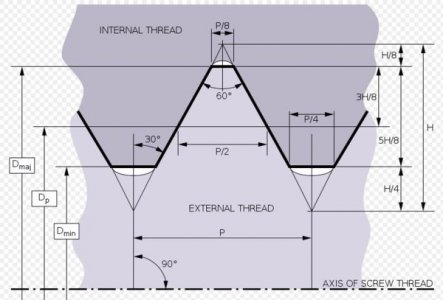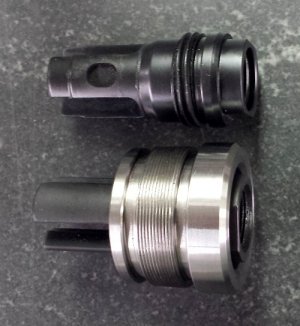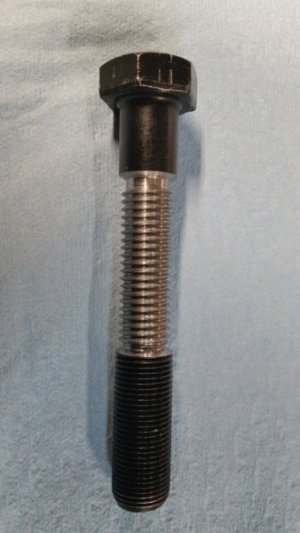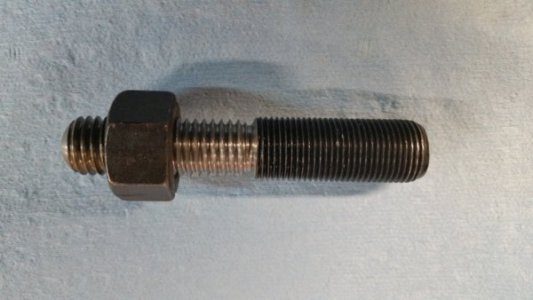- Joined
- Feb 1, 2015
- Messages
- 9,622
The problem with using an o.d. for measuring external threads or an l.d. for internal threads is that the unified thread standard has a flat on crest of an external thread and at the root of an internal thread. Unless that flat was accurately re-cut with each pass, any measurement of o.d. or i.d. respectively will not give accurate results.
It would be possible to cut an external thread by starting with an oversize diameter and cutting until the o.d. was equal to the major diameter + sqrt(3)/8 times the pitch, which is the diameter of an untruncated thread. For a 1/4-20 thread, this would be .250 + .0108 = .2608. The thread would be finished by turning the o.d. down to .250 which would create the proper flat.
A similar process could be used for internal threads. A slightly smaller hole could be bored and the threading tool used to cut threads until the i.d. was equal to the minor diameter - 7*sqrt(3)/8. For a 1/4-20 thread, this would be .250 -.0758=.1742. The thread would be finished by boring to the minor diameter or larger, e.g. tap drill size.
This procedure would be for a basic thread. Depending on the class of fit desired,an adjustment would be made to the diameters measured (slightly smaller for external or slightly larger for internal threading.
A copy of the standard thread geometry and an Excel spreadsheet giving values for the untruncated diameters for external and internal SAE threads are below.

It would be possible to cut an external thread by starting with an oversize diameter and cutting until the o.d. was equal to the major diameter + sqrt(3)/8 times the pitch, which is the diameter of an untruncated thread. For a 1/4-20 thread, this would be .250 + .0108 = .2608. The thread would be finished by turning the o.d. down to .250 which would create the proper flat.
A similar process could be used for internal threads. A slightly smaller hole could be bored and the threading tool used to cut threads until the i.d. was equal to the minor diameter - 7*sqrt(3)/8. For a 1/4-20 thread, this would be .250 -.0758=.1742. The thread would be finished by boring to the minor diameter or larger, e.g. tap drill size.
This procedure would be for a basic thread. Depending on the class of fit desired,an adjustment would be made to the diameters measured (slightly smaller for external or slightly larger for internal threading.
A copy of the standard thread geometry and an Excel spreadsheet giving values for the untruncated diameters for external and internal SAE threads are below.





